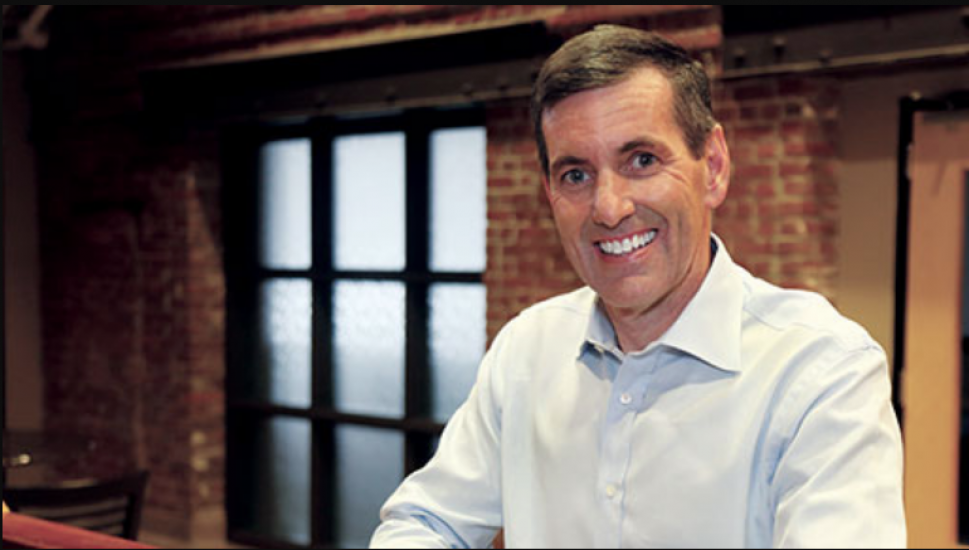WorkingNation consultant and workforce reporter Ramona Schindelheim continues her series of interviews with America’s top CEOs about solutions to closing the skills gap.
The Baby Boomer generation is aging. Within the next ten years, one in five Americans will be 65 years old or older. And as the population ages, the demand for health care will swell, and so will the demand for health-care workers. Despite a three-percent unemployment rate, the health care industry has work to do to meet that demand.
According to the Bureau of Labor Statistics, there won’t be enough skilled workers — doctors, nurses, home health-care workers, clinicians and medical assistants — to fill the more than 2.3 million jobs the industry is expected to add by 2024. Many of those jobs will have a tech component.
“Our associates interact with, support and use a broad range of tools and technologies, and perform a wide variety of technology and data-related jobs,” explains Bruce Broussard, the CEO of Humana. Based in Louisville, Kentucky, Humana employs more than 50,000 people to care for its 14 million members, who have signed with the company for a diverse range of health care services.
“We’re committed to helping our millions of medical and specialty members — many of whom are living with multiple chronic conditions — achieve their best health through clinical excellence and coordinated care,” Broussard tells me. “Our integrated care delivery model works closely with physicians and other health-care professionals to make use of data analytics, in-home care, behavioral health, pharmacy services and wellness solutions.”
“Our goal is to make health care easier to access and navigate, providing the right care in the right place to improve well-being and lower costs,” according to Broussard. Increasingly, Humana employees work with emerging technologies like robotic process automation, machine learning, cloud-native platforms and open innovation architectures. “Everything from working with Big Data, interacting with devices via the internet of things (IOT), to electronic medical records, digital, mobile and cloud systems and technologies to traditional IT-related technologies, and even mainframe technologies.”
The company is developing its own tools and software that combine health care and tech. Humana’s Innovation and Digital Experience experts have designed an Amazon Echo prototype that could help seniors better manage their medications.
“The voice-based solution allows seniors to ask questions about their medications — ‘When is my next refill?’ ‘What side-effects might I have?’ or ‘I’m having nausea, which of my medicines might be causing this?’ — and get immediate answers and advice. A companion mobile app displays medication info and history,” says Broussard.
Humana’s Clinical Analytics team can identify members who have the highest likelihood of developing a diabetic foot ulcer, a dangerous situation that can lead to amputations. “By identifying these members early, we can engage with them and slow the progression of their disease, enhancing their quality of life and saving a great deal of expense.”
RELATED STORY: C-Suite Solutions: Sodexo CEO Geographic Regions Lorna Donatone on the benefits of upskilling
“We’ve also launched a pilot program to help those suffering from congestive heart failure (CHF), in which the heart does not pump strongly enough. If a CHF patient retains water — in the lungs, legs or chest cavity — that can signal a serious complication. With a wireless, connected scale, we can monitor for sudden changes in weight, addressing the problem before it requires a trip to the hospital,” says Broussard.
All the new technology calls for an aggressive program to make certain Humana has the best, most skilled employees working for the company. “An approach we are using to meet our talent needs is providing training and exposure to new technologies for our existing associates,” according to the CEO. “Often when new technology is being rolled out it is easy to overlook the impact on the work as it is done today and who does it. When implementing transformative technologies, we are looking at ways to engage the teams that do the work for which the new system is intended early in the development.”
Humana’s CEO says the company invests in a 70/20/10 approach to development, recognizing that the right mix of formal learning, social learning and on-the-job experience vary by person and situation. “We work to meet our associates where they are with a contemporary mix of development opportunities.
“We invest in a large portfolio of best-in-class, on-demand learning resources, tuition reimbursement, rotational programs, internships, action learning projects and experiential moves. Our goal is to provide a dynamic learning ecosystem that grows our associate community continuously in ways that are applicable and relevant to their career aspirations and the needs of our members.”
As an example of the training policy in action, Broussard points to the changes in Humana’s Resolution Team, which handles issues for its members and providers that need the company’s help most. “We are developing and deploying technology that automates what has been very manual, intensive work previously.”
“We are combining the power of machine-learning and customer relationship management software with the knowledge and familiarity of our associates of the existing processes. Paper and electronic documents will move through the system more quickly and more accurately, getting answers back to our members and providers,” says Broussard.
“Gains in technology continue to push disruption in all industries, and the ability to rapidly adapt and learn will continue to be critical to success for organizations. At Humana, we are investing in our workforce to develop contemporary and relevant skills that enhance their career options and enable them to better contribute to the health and well-being of our members and partners.”
Some of the training is internal and some are in partnership with outside groups, such as Louisville-based Degrees Work, which empowers working adults to earn degrees. “Humana partners with many non-profit organizations, local, state and federal government entities to foster a highly skilled workforce and create greater career opportunity. We believe that when the communities we serve thrive, so does Humana,” Broussard tells me.
“The needs of our members will continue to evolve, requiring a renewed approach to engaging and developing our associates. We are currently reaffirming our commitment to associates and investing in their acquisition of skill in a meaningful way, and this commitment results in a brighter future for our associates, our members and the communities we serve.”
So far, 25,000 Humana employees have participated in the tech training, which also helps the health care company retain the best employees, according to Broussard. The turnover rate for workers who have taken part in the program is less than five percent, compared to 15 percent for those who have not taken advantage of the training.
The CEO also says it is important to connect on the local level, hiring and training a workforce that is reflective of the diversity of a community. “As the rates of diabetes, congestive heart failure, obesity and other chronic conditions continue to grow — driven largely by lifestyle choices and other social determinants of health — it’s important that we gain a holistic view of our members by understanding the communities where they live and work,” Broussard says.
Humana has been honored as one of the Top 25 Most Noteworthy companies by DiversityInc., and has more than eight Network Resource Groups that are voluntary, associate-led and open to everyone. More than 25 percent of Humana employees are affiliated with an NRG.
“When the people who work at Humana feel a sense of purpose and belonging, and feel safe to bring their whole selves to work, they are often more inspired and motivated to make positive lifestyle changes for themselves and our customers.”
Humana’s hiring and training initiatives are designed to help close the tech skills gap, and they tie into the company’s Bold Goal initiative, which aims to make the communities it serves 20 percent healthier by 2020. “High-tech solutions like remote monitoring, voice-activated assistants and social connectivity apps can help, but only if meaningful human engagement — one person to another — is there as well. It’s that sort of empathy and understanding that will carry well-being into the future.”
Join the Conversation: To comment on this week’s C-Suite Solutions article, head to our Facebook page.
Catch up on previous C-Suite Solutions stories here.
Connect with Ramona via Twitter or her website. You can read her previous articles for WorkingNation at this link.













